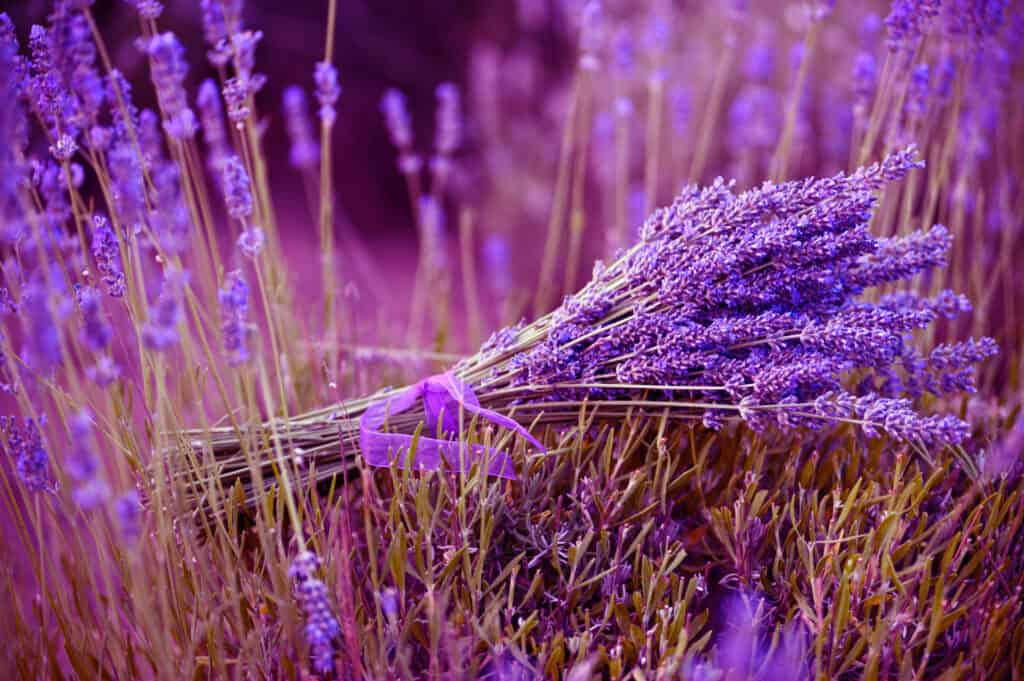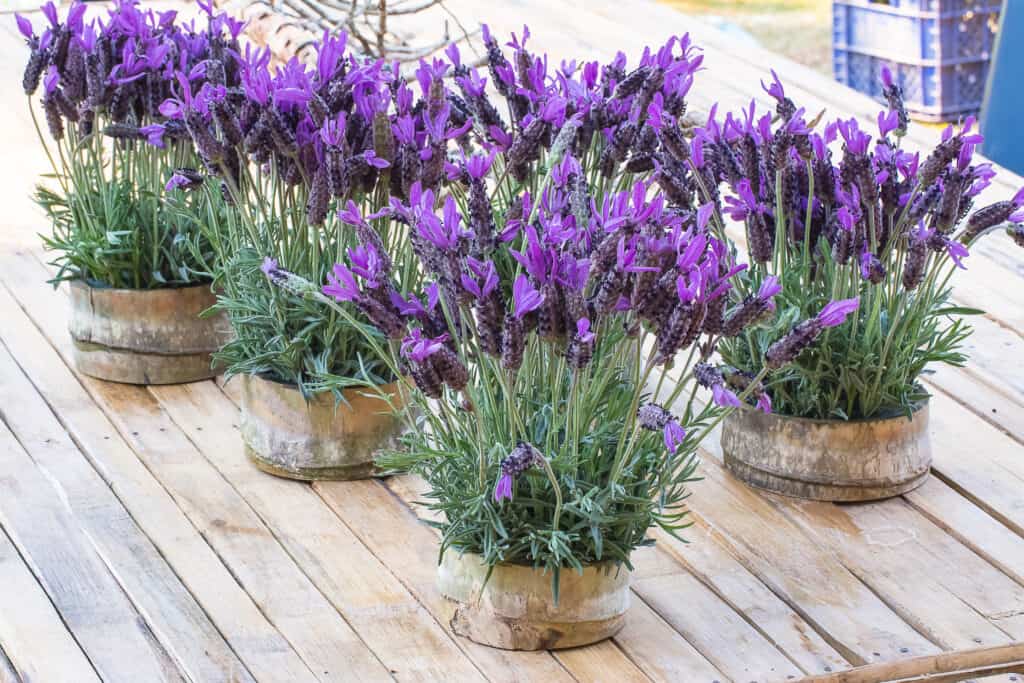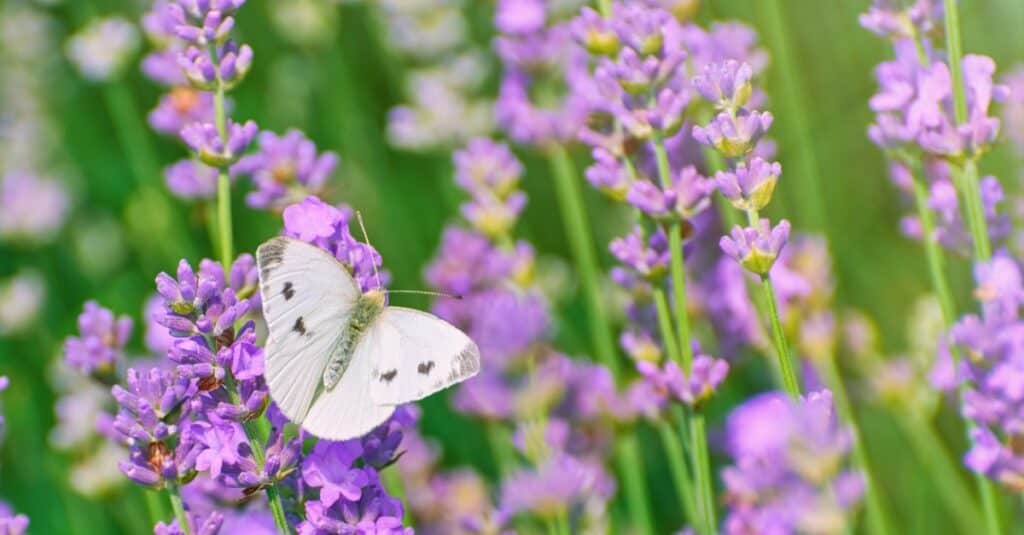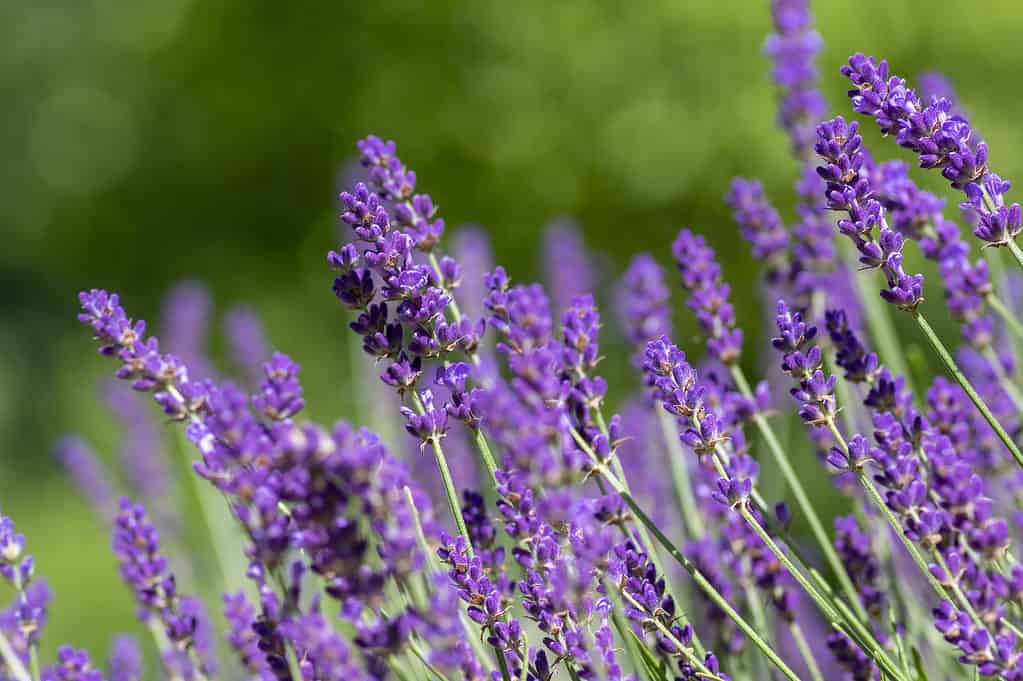Did you know most countries have a designated national flower representing them? The United States’ national flower is a rose, England’s is a Tudor rose, and Australia’s is the Golden Wattle, but do you know Portugal’s? Let’s discover the national flower of Portugal: Lavender! Or is it?
What Is Portugal’s National Flower?
Lavender is generally cited as Portugal’s national flower, but it’s not actually official as no government decree has been released! However, Portugal does have a government-decreed national tree. It’s Quercus suber the Cork Oak.
Cork oak is of national economic importance in Portugal, and it was declared the national tree in 2011 after a citizen petition was submitted to the Portuguese parliament.
Although lavender is not officially the national flower of Portugal, many Portuguese see it as their floral symbol. In Portuguese, lavender is “alfazema”.

No official decree has been made to name lavender as the national flower of Portugal.
©freya-photographer/Shutterstock.com
Where Is Portugal?
The Portuguese Republic is located on the Iberian Peninsula in Western Europe and includes the Azores and Madeira archipelagos. Portugal has just one land border with Spain. The Atlantic Ocean surrounds the rest.
Portugal covers 92,090 square kilometers, roughly the same size as Indiana. 10.3 million citizens live there, and the capital is Lisbon.
Its climate is typically Mediterranean, with long, hot summers and mild winters, which are the perfect growing conditions for its national flower!
Why Is Lavender the National Flower of Portugal?
Lavender is Portugal’s unofficial national flower because Portugal is home to the Alentejo region. Lavender grows there in huge abundance, including the Portuguese native Lavender, Lavendula latifolia.
This lavender is stronger scented than English lavender and has wider leaves, hence its name, latifolia meaning ‘broadleaf.’
Discover the National Flower of Portugal: All About Lavender
Lavendula is a perennial subshrub with woody stems. It’s a member of the Lamiaceae mint family, and there are 47 known species in the northern hemisphere.
Lavendula angustifolia, English lavender, is the most popularly grown in the States. French and Spanish lavender are popular, too, but they are less winter-hardy.
Lavender has a special place in human history. It’s native to the Mediterranean (including Portugal) and was brought to Britain in the first centuries by invading Romans. When settlers arrived in the Americas and Australias, they planted their lavender, which also naturalized there.
The name lavender comes from the old French lavendre for ‘wash,’ most likely because it was used to scent clothing and deter lice.

The lavender flower can come in various shades, making it a beautiful national flower for Portugal.
©Kalina Georgieva/Shutterstock.com
Lavender Flowers
Lavender flowers grow on top of spikes about their foliage. Each little bloom is a whorl of blue, purple, lilac, pink, or white. Its flowers are universally loved by pollinators, especially bees, who are easily able to access the nectar through the open-faced flowers.
Although many people think it’s the flowers that hold lavender’s unique scent, it’s actually its foliage that stores most of its scented essential oil.
Lavender Foliage
Lavender leaves are gray-green, pinnate, and covered in fine hairs. When rubbed, they release oil with a strong fragrance.
Lavender oil is a potent antiseptic, anti-fungal, and anti-bacterial. It was used to treat wounds as far back as the ancient Greeks right through to the trenches of WWI.
Lavender Growing Zones
Lavender is a Mediterranean native, so it naturally grows in hot, dry climates. In the United States, it prefers the drier western States, and areas in the south are often too humid. If there’s something lavender hates, it’s being damp!
Generally speaking, lavender will grow in zones 5 to 8, with more delicate species like French and Spanish lavender in need of zones 7-9.
The toughest of all lavenders is Lavendula angustifolia, the English lavender. With well-drained roots and plenty of sun in the summer months, it can survive frosty winters and snowfall.
How to Grow Lavender at Home
The best place to grow Portugal’s national flower is in full sun with well-drained soil. In these conditions, it will produce masses of flower heads and oily, fragrant leaves. Your bee visitor count will hit the roof.
Pots, raised beds, and containers are also excellent spots for lavender. Raise them on bricks for good drainage, and lavender will grow back each year.

Lavender can be grown in pots as well as in fields, making it easy to grow in Portugal.
©Shan 16899/Shutterstock.com
Troubleshooting Lavender
No Flowers
When lavender refuses to flower, the problem is usually a lack of sun. Move it somewhere hotter and brighter.
It’s Leaning
Because lavender loves sunshine, it will reach for the light. Turn the container or move it to a spot with 360-degree sunshine.
Brown Foliage
It’s rare, but in very hot climates, brown leaves mean a lack of water. It’s more likely in containers than soil.
Soak it in a bucket of water for a day.
Floppy Foliage
Floppy foliage is usually too much fertilizer or too rich soil. Lavender likes poor sandy soil and barely ever needs fertilizer.
What Is the National Animal of Portugal?
The national animal of Portugal is their native Iberian wolf. It’s a subspecies of gray wolf that’s endemic to the Iberian peninsula and admired for its intelligence and strength.

Lavender is not only a symbol of home to Portugal, but it is home to thriving insects like butterflies.
©iStock.com/Rocter
What Plants Are Native to Portugal?
We’ve discovered the national flower of Portugal is lavender, but what other notable plants grow there?
1. Cork Tree
The cork oak is Portugal’s official state tree, but why is it so important to the Portuguese?
The cork oak is the primary source of wine bottle corks, cork flooring, and cricket ball centers, and Portugal is responsible for 50% of world production. Cork trees cover 750,000 hectares of Portugal.
It’s a tough tree that survives drought and provides habitats for the endangered Iberian lynx and the Iberian imperial eagle. Overwinter, many European cranes overwinter in cork oak branches.
2. Rhododendron ponticum
The common rhododendron is endemic to the Iberian peninsula, but the fossil record shows it was widespread across Europe 20,000 years ago.
It’s a dense foliage shrub or small tree with evergreen leathery leaves and vivid pink-purple flowerheads. Although attractive in its own right, this shrub is often used as a tough rootstock to graft new colorful rhododendron stock.
This rhododendron is considered an invasive species in some western European areas, such as the UK.
3. Hare’s Foot Fern (Davallia canariensis)
This fern in the Davalliaceae family is endemic to the Iberian peninsula and Macaronesia.
It’s a deciduous spreading fern with thick scales and frilly fronds. It can reach two to three feet tall and double that in width.
It grows on moss, tree trunks, and rocks that are doused in humidity from the ocean. It’s hardy in Portugal, but in cooler places, it’s usually best grown as a houseplant.
4. Thymus caespititius
Thymus caespititius is a dwarf thyme herb. It’s gently aromatic and forms two feet by two feet ground covering mat of deep pink or white flowers and tiny round leaves.
If you want to grow this thyme species, it suits US zones 7 to 9. You might already know its famous cultivar, Thymus aureus, which has paler golden leaves.
5. Autumn Snowflake (Acis autumnalis)
The pretty little autumn snowflake flowers from September to November in Portugal when cooler weather arrives. It’s a native wildflower about six inches tall that grows on open grassy meadows or stony, well-drained ground.
Its pink-tinged white bell flowers appear before its tufty green foliage, and once established, many grow in a swathe across open meadowland.
Autumn snowflake flowers are pollinated by bees, and they mature into small black fruit that birds and small mammals are quick to take advantage of.
6. Basil-leaved Rock Rose (Halmium ocymoides or Cistus algarvensis)
The basil-leaved rock rose is native to Portugal and Spain and stretches down into northwest Africa.
It’s a pretty rock rose with erect evergreen leaves that reach a foot tall but spread over three feet wide. Its leaves are woolly gray-green and able to cope with direct sunlight.
Basil leaves rock rose has glorious bright yellow flowers with purple at the base. During springtime, they are smothered with pollinators and attract insect-eating birds.
This is a popular ornamental for dry gardens, and it pairs up well with purple-shaded lavender.
Discover the National Flower of Portugal for Yourself!
Lavender farms in the Alentejo region not only produce fine lavender but they’re also tourist hotspots.
If you want to discover Portugal’s national flower for yourself, there are lots of places to stay and soak up Portugal’s history, wine, and relaxing lavender scents. May to August are the best months to visit and encounter huge fields of lavender — Portugal’s national flower.

Lavender is widely recognized throughout Portugal as the country’s chosen flower.
©iStock.com/Iva Vagnerova
The photo featured at the top of this post is © iStock.com/Iva Vagnerova
Thank you for reading! Have some feedback for us? Contact the AZ Animals editorial team.







